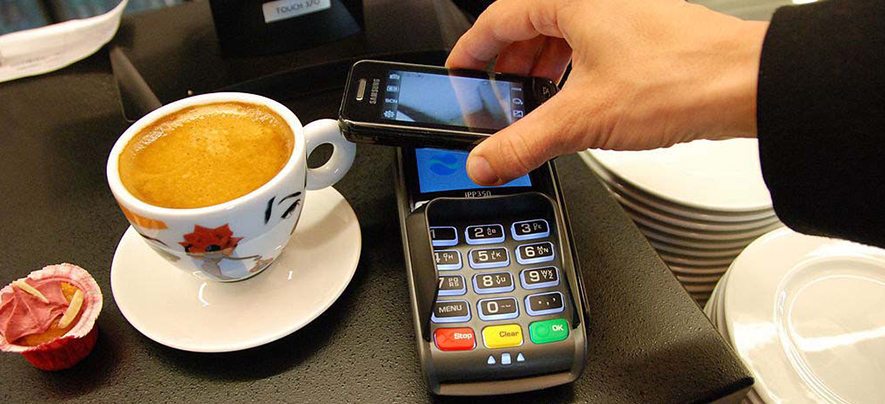7 imperatives of digital retail

சில்லறை
432 வாரத்திற்கு முன்பு — 13 நிமிடம் படிக்க
Google predicts that in just four years 50% of modern retail will be influenced by digital. Gartner envisions large organisations to steer a quarter of the enterprise costs towards digital transformation. Digital retail is here. And it asks a lot from the retailers. Here’s a look at the seven most important demands of digital retail.
1. Collaboration with startups
“New disruptions are coming from startups. Retailers have to adapt to this new ecosystem where startups dominate,” declared NASSCOM President CP Gurnani, who is also the MD & CEO of Tech Mahindra. While startups bring in radically fresh ideas or fundamentally new ways of doing things, which may be intimidating, experts feel that this is more an opportunity than a threat.
Startups offer great solutions that retailers can leverage to substantially boost their capabilities. For instance, startups like GreyOrange can help retailers turn their warehouses into efficient fulfilment centres. In the UK, both John Lewis and Tesco have collaborated with startups to uncover great ideas and add to their digital capabilities. Some of the areas they are working on are smart labelling and 3D room planning.
US-based retailer Target has achieved huge savings by partnering with a startup that helped it discover money lost in overpayment to vendors. The partnerships need not always be between solution providers and retailers. They could be between retail startups offering niche products and established retailers. US retailer Whole Foods, for instance, stocks hottest new brands by startups. Considering the speed at which new solutions are popping up, it’s counterproductive and extremely expensive trying to do everything by oneself. Partnership with the new-age startups and other disruptors is really the only way retailers will be able to give customers a wholesome experience.
Action point: “Big-company executives must choose to become personally more aware of new, growing companies,” advise experts Eddie Yoon and Steve Hughes in an HBR article. Although it may seem like effort, a KMPG report found that 84% of the times, it is worth it.
2. Judicious use of hyperlocal
Hyperlocal really fine-tunes a retailer’s offering to the consumer based on her precise location. It affords brick and mortar retail easy discoverability while driving impulse purchases through lucrative deals pushed at the right time. Imagine a customer standing next to a brand’s retail outlet and knowing her profile, the retail outlet pushes a customised offer! Retailers across US and UK have adopted hyperlocal technology to serve contextual communication to shoppers within the store. Throughout the USA, top national retailers including Best Buy, Sports Authority, J.C.Penney and Target have use hyperlocal to capitalise on an offline data-driven retail experience.
“Considering the tremendous cut-throat competition, it is paramount for the retailers to be found by the search engines and hence getting themselves updated by being hyperlocal is important,” said K Ganesh, Serial Entrepreneur, Partner – GrowthStory.in and Chairman, Portea Medical.
Abey Zachariah, CEO, Goodbox said, “For a business like ours, it creates lots of opportunities.”
Action point: Do a complete cost-benefit analysis before jumping onto the hyperlocal bandwagon to ascertain if your business will really benefit from it. “One needs to take the unit economies into consideration,” advised Damodar Mall, CEO - Grocery Retail, Reliance Retail Limited. While most retail stalwarts agreed that hyperlocal is a powerful customer engagement and enticement tool, do not just jump into it because everyone else is doing so.
3. Varied, seamless payment options
Payments may be the last in the process of shopping, but they are slowly becoming the most important. There are enough examples of carts being abandoned due to friction at this crucial juncture.
Today, paying for a single transaction may involve several modes of payment — part of it by card, part by points/vouchers and the remaining through a mobile-wallet.
Worldpay’s 2014 guide to Global Payments states that by 2017, 59% of all global transactions will be made with alternative payment methods. It may well be true as Indians are warming up to using alternative payment systems. According to the report ‘Top 10 Trends in Payments in 2016,’ by Capgemini, implementation of immediate payment systems will continue to accelerate globally as retail customers demand for services providing immediacy of transactions. Immediate payments can drive the growth of non-cash payments. The report further predicts that hidden payments volume growth will further accelerate, driven by four key categories of payment instruments:
- Closed-loop cards and mobile apps
- Digital Wallets (non-banks)
- Mobile money (non-banks)
- Virtual currencies
Customers will shop with those who make payments, hassle-free, easy, secure and flexible.
Action point: Explore all options available today, including payments through chat and whatsapp. Focus on seamless integration of different payment systems, making it a breeze for customers to pay using as many options as they wish. “Your payment gateway, if online, should be user-friendly with minimum typing to avoid errors,” suggested Sumit Kumar Singh, Associate Director, Head of Digital Payments and Personalization Services, MakeMyTrip.
Meheriar Patel, CTO & VP-IT, The MobileStore advises creating awareness among customers about the different payment options you provide so they know they have multiple options.
4. Supply chain transformation
“It is absolutely imperative to have good supply chain management to reduce costs, increase bottom line and delight customers,” said Bruce Harryman who is responsible for the National Distribution Network Planning at John Lewis, UK.
Today, the lines between replenishment and fulfilment have blurred. “Unless there is transformation in the existing supply chains, fulfilment of customer needs is not possible,” said Dhruvil Sanghvi, CEO & Cofounder, LogiNext.
Nitin Agarwal, Head - Strategy & Planning, Arvind Lifestyle Brands observed that if customers do not find a product, instead of walking away, they ask if it is available at another store or location or whether it can be shipped to them. This requires supply chains to not just be agile, but also transparent.
Peter Sondergaard, global head of research at Gartner predicts that in leading organisations, about 20 percent of the investment in digital will be allocated directly to supply chain transformation.
Consumers are increasingly moving towards omni-channel demand fulfillment.
Action point: Invest in digitally-driven supply chain transformation. Focus on meeting the goals of speed improvement, cost improvement and quality improvement. Ensure transparency at all costs.
5. Thinking beyond mobile/e-commerce
Digital retail is often used synonymously with m-commerce or e-commerce capabilities. “Digital retail is about mobile and web both, bringing both B2B and B2C on the same platform. I would categorise all cyber transactional activity as digital retailing, whether done by customer directly or through assisted mode,” Alok Jha, MD, CyberPlat India.
However, digital retail is much bigger than just what can be done with online and mobile. Furthermore, it involves a lot more than digitalisation of established processes.
“Broadband, the cloud, AI [artificial intelligence], big data are all coming together at the same time. …It (digital) is moving business away from automating the business to rethinking it,” according to UK-based management consultant Roger Trapp.
“It’s about exploiting digital’s immense potential to do things smarter, faster, easier and cheaper, for the customer and the business (but it has to be in that order!),” said customer experience evangelist Annie Turner.
Retailers who focus on the narrow view of digital and only focus on mobile or e-commerce will end up with lopsided capabilities, falling short of delivering a truly digital experience in store.
Action point: Get a 360 degree view of digital retail. Consider bringing in digital capabilities in business processes, in-store experience, supply chain and more areas other than mobile. Think simulation, 3D, virtual reality, artificial intelligence, machine learning, internet of things.
6. Digital-savvy staff
“We need to think about how digital evolution can actually be capitalised by the front end staff to enhance sales,” said BS Nagesh (BSN), Chairman RAI; Founder TRRAIN, while speaking about digital retail.
Ultimately, it’s the front-end staff that translates the brand promise into a brand experience. It is therefore critical that every person on the floor is comfortable in a digital environment using digital tools. It will help bridge the gap between what the brand promises and what’s been delivered. “which is what good customer experience is all about,” as per Rachna Nath, Partner, KPMG.
“Today, even people in the back office/head office connect directly and with consumers be it through social media or other digital platforms,” said BSN. True digital retail demands that the entire workforce is digitally savvy.
Action point: Make digital the DNA of the organisation. Right from the directors to the front end staff, everyone should be able to derive and deliver value from digital tools. In addition, retailers may develop an innovative business model which helps them better adapt towards developing a digital culture and hire a team of individuals with digital skills to help with the journey.
7. It’s about a mindset change
Digital retail is more about attitude and a transformation in the company’s thought process than it is about technology. “It’s easy to buy technology, but managing the change it brings is what’s difficult,” said BSN.
“There is a need for change in attitudes by the CXOs. The environment is changing and in addition to learning about the latest in technology, we need to learn change management and bring in a digital mindset,” he added.
So what does a digital mindset entail?
“The digital mindset looks at digital opportunity through a much wider lens that also includes strategy, culture, processes and the ways to engage with humans and “things,” according to Smit Gupta is Marketing Director at Unisys.
According to authors of the book What ‘Digital’ Really Means Karel Dorner and Dave Edelman, a digital mind set is about being more externally focused, to connect with outside organizations, outside vendors, outside talent. An external orientation is also ultimately customer orientation.
“It’s a question of changing the way you operate and then using digital technology to give you the low-cost flexibility to get that done—and then measure it,” said the authors.
Action point: Journey to digital maturity requires a whole-hearted commitment from a company’s leadership and a sustained investment in people, capabilities, technology, and cultural change, according to Tanguy Catlin, leader of McKinsey’s Digital Quotient initiative.
To get started, an organisation must be honest about its current digital quotient, clear about its long-term strategic opportunity, and open to iterating and refining solutions along the way.
Article & image source: STOrai Magazine
Disclaimer: The views and opinions expressed in this article are those of the author and do not necessarily reflect the views, official policy or position of GlobalLinker.
STOrai இன் சுயவிவரத்தை காண்க
SME இன்ஸ்பிரேஷன்ஸ்
STOrai Magazine எழுதப்பட்ட பிற கட்டுரைகள்
Positive Shopping Experiences: The Journey is Expected to Be Just as Enjoyable...
28 வாரத்திற்கு முன்பு
Enhanced Brand Storytelling in the Digital Age
30 வாரத்திற்கு முன்பு
What is the Lasting Impact of Positive Customer Experience in Retail?
33 வாரத்திற்கு முன்பு
இந்த வாரம் அதிகம் படித்தது
டிரெண்டிங்
சிறு மற்றும் நடுத்தர நிறுவனங்கள் (SME) டிஜிட்டல் மயமாக்கல் மூலம் வெற்றிக்கான புதிய பாதை
Digital & Technology 7 வாரத்திற்கு முன்பு
Learning & Development 20 வாரத்திற்கு முன்பு
Top Exports from India to Sri Lanka: A Detailed Analysis of Leading Products
Export Sector 21 வாரத்திற்கு முன்பு















கருத்துகள்
தயவு செய்து உள்நுழைய அல்லது பதிவு விவாதத்தில் சேர